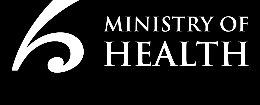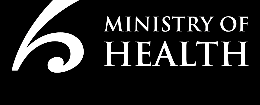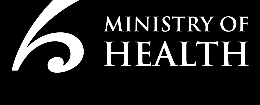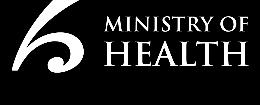
Document Nine
Memorandum
Personal Protective Equipment (PPE) distribution
across the health sector: Follow up
Date due to MO: N/A
Action required by:
N/A
Security level:
IN CONFIDENCE
Health Report number: 20200704
To:
Hon Dr David Clark, Minister of Health
Contact for telephone discussion
Name
Position
Telephone
Dr Ashley Bloomfield
Director-General of Health
section 9(2)(a)
Keriana Brooking
Deputy Chief Executive, COVID-19
section 9(2)(a)
under the Official Information Act
Action for Private Secretaries
N/A
Date dispatched to MO:
.
Released

Document Nine
Personal Protective Equipment (PPE) distribution across the
health sector: Follow up
Purpose of report
1.
To provide an update on the rapid stocktake of district health boards (DHBs) PPE
distribution to community-based frontline health services, with a particular focus on
those DHBs with less detailed responses
2.
To provide a detailed account of the Ministry of Health’s approach to PPE distribution Act
to DHBs
3.
To provide the results of a rapid stocktake of DHB’s internal PPE distribution processes
Background
4.
As you requested, the Ministry has fol owed up post stocktake with a few DHBs to
gather more detail on their distribution of PPE to frontline health and disability
providers and services.
Information
5.
The DHBs wil continue to be fol owed up over the next week including Canterbury,
Capital Coast DHB, Lakes, MidCentral, Nelson Marlborough, Northern Region, Southern,
Tairawhiti and West Coast. Fol ow up has been based on information received in the
initial stocktake with a requirement for more detail on their provider distribution
landscape. The MOH PPE team are reassured that distribution processes are working
Official
well and that this is more an opportunity for improvements and cross pol ination of
ideas.
6.
The Ministry was also asked to further det
the ail their considerations for PPE distribution to
DHBs including the modelling used.
7.
Demand modelling considers a number of factors including workforce, clinical
guidance, epidemiology trending, hospitalisation rate, input from clinical experts and
basic reproductive numbers. A number of assumptions are then applied for example
under
staff using PPE rational y, i.e. assuming people are not overusing PPE items. We are
working with DHBs to better understand actual utilisation versus demand.
8.
On 4 May 2020, all DHBs were asked two additional questions by email to provide
information on the way DHBs are distributing PPE within their organisations across all
of their settings. These responses were returned by 5 May 2020 and consolidated to
provide a picture of the differences across the DHBs
9.
The rapid stocktake asked DHBs for:
Released
• How does each DHB calculate the quantities required for their own staff (in any
given time frame e.g. per week) and how does each DHB al ocate this between
different occupational groups in accordance with their risk guideline?
• Noting that national risk guidelines exist, is your DHB using these?
Health Report: 20200704
2

Document Nine
The collated information from the stocktake has provided me with confidence that al
DHBs have appropriate processes in place to distribute PPE internal y. Whilst there is
variability in process type and governance, al have approaches that respond to need
across services and wards. Al ocations are not specifically considered in terms of
occupational groups but rather based on clinical need. There is resilience built in to al
processes including trend analysis, buffer allocations and 24-hour availability to
account for ‘peak’ demands. Some DHBs are completing regular independent
stocktakes of al PPE stocks to ensure there is no stockpiling. Future modelling is
occurring in some DHBs with project teams set up to determine ongoing PPE demand
dependent on level changes.
Act
All DHBs are referencing the national guidelines issued by the Ministry of Health, often
in consultation with local Technical advisory groups and/or Infection prevention and
control expertise. Some cited that requests have been higher than predicted by the
guidelines mostly due to staff apprehension. A few DHBs have created specific
governance overseeing these ‘excessive’ orders with guidelines to create an objective
review of such requests. Many DHBs acknowledged the role of Colleges in providing
guidance to their members on use of PPE.
Update on Progress
Information
10.
There are areas that the Ministry has been working on with DHBs to further strengthen
and improve the process of DHB distribution and use:
a) Updated guidance has been drafted, by our clinical leaders, for community care
providers for release this week which provides updated FAQs and key risk
assessment questions to support that sector
Official
b) The Ministry have established an issues resolution and feedback process. The
process outlines points of escalation and resolution at different stages and key
the
responsibilities. Feedback to date suggests that having clarity about resolution
pathways has helped address the PPE distribution situation
c) The Ministry is working closely with DHBs through an established and
coordinated approach to the procurement of PPE and national logistics. There
is the recognition that distribution of PPE to remote areas remains a chal enge
under
with solutions constantly being reviewed. Local production opportunities are
also being explored
d) We are working closely with DHB procurement partners to build an
understanding of demand and usage. Modelling continues to have a heavy
reliance on information provided to us by DHBs and data extracted by two
ordering portals. A demand and supply monitoring framework is currently
being developing and bi-weekly meetings occur with procurement networks
Released
(including PHARMAC, Health Partnerships, Health Source and DHB’s
procurement leads)
11.
In summary it is clear that, despite early chal enges, there has been significant
work both at the DHB and Ministry level to create a PPE distribution network
that is resilient to the health and disability care system’s needs. There will
continue to be review and improvement of al processes and systems to enable
flexibility against changing needs.
Health Report: 20200704
3

Document Nine
Next steps
12.
The Ministry will continue to work hard with DHBs to improve distribution, timeliness
and procurement to secure sufficient PPE to meet the needs of the wider New Zealand
health system as part of its COVID-19 response.
13.
The Ministry has established a formal ‘Issues Resolution and Feedback’ process to
manage and resolve supply and distribution issues with positive feedback to date.
14.
The Ministry will circulate the col ated findings of the stocktake this week to all DHBs so
Act
they can consider the approaches taken by other DHBs with a view to identifying
improvements they could make to their own approach.
15.
As you know, the Office of the Auditor-General is independently reviewing the
management of PPE during the COVID-19 response. The OAG report with
recommendations should be completed in two weeks and wil publicly released.
16.
Having completed stocktakes of DHB’s internal and external distribution of PPE, it is
clear that despite early chal enges the Ministry and DHBs are working wel together to
constantly review and improve PPE distribution.
Information
Dr Ashley Bloomfield
Official
Director-General of Health
the
under
Released
Health Report: 20200704
4
Document Outline



